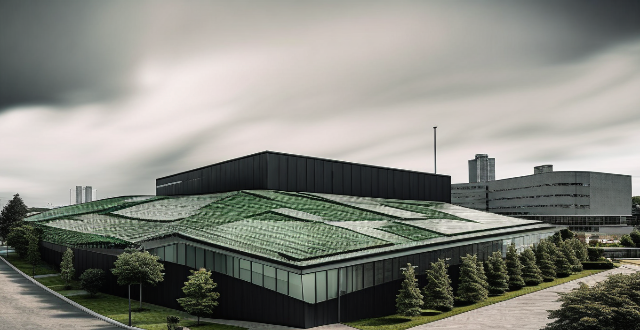Innovative technologies are transforming energy efficiency in buildings. Smart building management systems optimize energy usage through sensors and AI, while green roofs/walls provide insulation and improve air quality. Solar windows generate electricity without obstructing views, and high-performance insulation materials like aerogel trap heat effectively. Energy-efficient LED lighting reduces power consumption and maintenance costs. These advancements contribute to a more sustainable built environment.

Innovative Technologies in Energy-Efficient Buildings
Smart Building Management Systems
Smart building management systems are at the forefront of energy-efficient technology. These systems use sensors, artificial intelligence, and machine learning to optimize energy usage within a building. They can control lighting, heating, ventilation, and air conditioning (HVAC) systems, as well as monitor energy consumption in real-time. This allows for adjustments to be made automatically or by the building manager to reduce energy waste and lower costs.
Key Features:
- Real-time monitoring: Sensors collect data on temperature, humidity, light levels, and occupancy.
- Automated controls: Systems adjust HVAC and lighting based on actual need rather than fixed schedules.
- Predictive maintenance: Machine learning predicts equipment failures before they occur, reducing downtime and repair costs.
Green Roofs and Walls
Green roofs and walls are becoming increasingly popular in urban areas for their aesthetic appeal and environmental benefits. These living structures not only provide insulation but also absorb rainwater, reduce the urban heat island effect, and improve air quality by filtering pollutants.
Benefits Include:
- Thermal insulation: Plants and soil layers provide natural insulation, reducing the need for heating and cooling.
- Stormwater management: Vegetation and soil absorb and slow down rainwater runoff.
- Habitat creation: They provide habitats for urban wildlife and increase biodiversity.
Solar Windows
Solar windows take the concept of solar power to a new level by integrating photovoltaic cells into glass panes. These windows generate electricity while allowing daylight to enter the building, reducing the need for artificial lighting and contributing to the building's energy supply.
Advantages:
- Energy generation: Convert sunlight directly into electricity.
- Reduced dependence on grid: Can significantly offset a building's energy demand from the grid.
- Maintaining views: Unlike traditional solar panels, solar windows maintain unobstructed views.
High-Performance Insulation Materials
Innovations in insulation materials have led to more effective ways of trapping heat, reducing the need for excessive heating or cooling. Materials like aerogel, which is lighter and more efficient than traditional insulators, are being used to maximize thermal efficiency.
Why They Matter:
- Superior insulating properties: Aerogel, for instance, has an R-value (a measure of insulation effectiveness) many times higher than traditional insulation.
- Eco-friendly: Many advanced insulation materials are recyclable or made from sustainable sources.
- Healthier indoor environment: Good insulation reduces moisture buildup, preventing mold growth and improving air quality.
Energy-Efficient Lighting
The shift from incandescent bulbs to LED lighting has been a significant step towards energy efficiency. LED lights not only consume less power but also last longer, reducing maintenance costs and frequency of replacements.
LED Lighting Benefits:
- Lower energy consumption: Use up to 80% less energy than traditional bulbs.
- Longevity: Can last over 25 times longer than incandescent lights.
- Dimmable: Allows for flexible lighting solutions that adapt to different times of day or activities.
Conclusion
The integration of these innovative technologies in buildings not only makes them more energy-efficient but also contributes to a more sustainable built environment. As technology continues to advance, we can expect even more creative solutions aimed at reducing our carbon footprint and enhancing our living spaces.